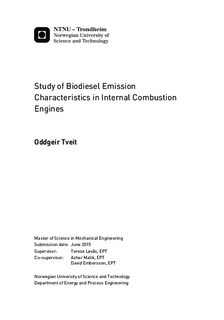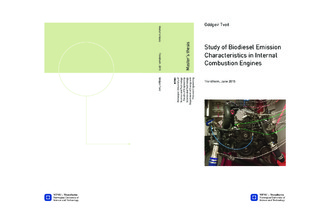| dc.description.abstract | Due to environmental concerns, biodiesel has become increasingly important as it shows significant environmental benefits. The aim of this project is to analyze the behavior of different types of biodiesels in a diesel engine, and compare this with the behavior of conventional diesel. Biodiesel changes the emission characteristics in a diesel engine in different ways, depending on the type of biodiesel. In this project two different types of biodiesels are used, a first generation biodiesel and a second generation biodiesel. These have different fuel properties such as cetane number, energy content, viscosity and density. To analyze how these fuels change the exhaust gas characteristics and engine performance, the focus has been on experiments using a modern turbocharged diesel engine. Simulations were also done to study the experimental findings in more detail.
The difference in emission characteristics when using biodiesel are most often seen as increased NOx emissions and decreased PM emissions, but this is not always the case. The experiments in this project yielded lower NOx emissions for both types of biodiesel, and higher PM emissions for the first generation biodiesel. The results from the experiments are thoroughly discussed in this report, with reference to the cylinder pressure curves, the heat release rate curves and the fuel properties.
The simulations were done using two different surrogate fuels for conventional diesel, n-heptane and a mixture of n-decane and 1 methylnaphthalene. But also methyldecanoate as a surrogate for biodiesel. The simulations showed that the two diesel surrogates simulated diesel with varying accuracy, both in engine performance and engine emissions. Proper biodiesel simulations in a diesel engine were not obtained and biodiesel was therefore simulated in an HCCI engine model instead. | |

